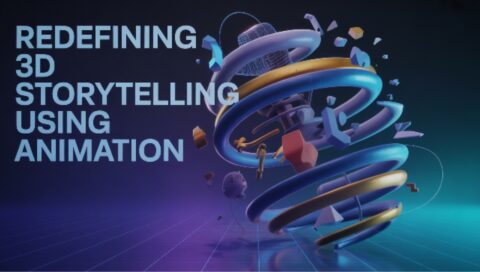In an age where digital marketing dominates headlines, it’s easy to forget that some of the most powerful brand connections still happen in the physical world. Whether you’re walking through a busy downtown, visiting a café, or driving past a construction site, signs remain one of the most effective tools for communication and engagement.
Even with the rise of social media ads and online campaigns, physical branding, like digital printing Calgary, continues to hold a unique power. Unlike digital impressions that vanish after a scroll, signs stay visible, working 24/7 to connect businesses with real-world audiences.
But why, in an increasingly screen-focused era, does signage still matter so much? Let’s explore how traditional signs continue to thrive alongside digital marketing, and why the right design, placement, and materials can make all the difference.
1. The Psychology of Seeing: Why Physical Signs Stick in Our Memory
While online ads compete for attention among hundreds of other pixels, physical signs have a different kind of presence. They’re tangible, large-scale, and occupy real space, and that matters.
The Power of Physical Presence
Humans are visual creatures. Studies show that people process images up to 60,000 times faster than text, and 80% of the information our brains retain is visual. Signs, especially large, well-designed ones, capitalize on this natural processing bias.
When someone walks or drives past a store with a bold, clear sign, they’re subconsciously forming associations about that brand. Even if they don’t stop right away, the visual imprint stays. Later, when they see that same name online or hear it from a friend, it feels familiar.
That recognition is priceless in marketing. It turns a cold audience into a warm one, not through an algorithm, but through simple repetition and visibility.
Signs and Spatial Memory
Unlike digital ads that appear and disappear, physical signs anchor themselves in memory through spatial context. When someone remembers a great meal or shopping experience, they often recall not just the name but where it was, what the building looked like, the colors of the sign, or even the lighting.
That’s something no digital banner can replicate. Signage links brand recognition with geography, helping people navigate and recall experiences in the real world.
Trust Through Tangibility
There’s also a psychological element of credibility. Physical signs suggest permanence, that a business exists, operates, and invests in its presence. In an era of digital scams and temporary pop-ups, seeing a brick-and-mortar location with professional signage still carries weight.
It tells the audience: we’re here, we’re real, and we’re part of this community.
2. The Marketing Power of Place: How Signage Bridges Digital and Physical
Today’s most successful marketing strategies aren’t just online or offline, they combine both. Signage serves as the perfect bridge between digital branding and the physical world.
The First Impression That Guides Behavior
Before people even interact with your business online, many first notice it in person. Whether it’s a storefront, vehicle wrap, trade show booth, or construction banner, that first visual touchpoint often determines whether someone decides to engage further.
This is particularly true for local and small businesses. A well-placed sign can generate immediate traffic from people already in your area, those most likely to convert into paying customers. Unlike digital ads, which require targeting and follow-up, signage captures interest in real time.
The Always-On Advertisement
Digital ads require budgets, bidding, and time limits. A physical sign, on the other hand, never goes offline. It doesn’t depend on clicks or impressions, it just works continuously.
Consider a well-designed building sign or window decal. It doesn’t need to compete for ad space. It stands out every day, promoting your brand passively but persistently.
When combined with QR codes, web addresses, or social handles, signage also becomes an interactive bridge to digital platforms. People might see a sign, scan it, and immediately engage with your brand online, an instant connection between the street and the screen.
Local Visibility Equals Real Engagement
In cities like Calgary, where neighborhoods have strong local identities, signage plays a major role in shaping community recognition. A bright, clean, and well-branded sign tells passersby not just who you are, but what you represent.
It’s location-based marketing at its most natural, reaching people where they live, work, and travel daily.
3. Why Signs Outperform Digital Ads in Certain Scenarios
Digital marketing excels at analytics and targeting, but it also faces challenges: oversaturation, ad fatigue, and the constant demand for new content. Physical signage, meanwhile, remains a quiet powerhouse, delivering results without the noise.
1. Longevity and Cost Efficiency
Unlike digital ads that need continuous funding, signage is an investment that pays for itself over time. A single outdoor sign can generate thousands of impressions per day for years, without recurring costs.
Businesses that use permanent exterior signage report higher brand recall and local foot traffic compared to those that rely solely on online exposure.
2. Capturing Attention in a Distracted Age
The average internet user now scrolls through over 300 feet of content daily on their devices. Amid that flood, attention spans are shrinking. But physical signs command attention by sheer presence, especially when placed strategically or designed with strong visual contrast.
Billboards, vehicle wraps, and window graphics can’t be “skipped” or “muted.” They insert themselves naturally into a viewer’s environment.
3. Reinforcing Brand Cohesion
Digital branding is often fragmented, an ad here, a post there. Signs help tie it all together. When your physical branding matches your digital presence (same colors, fonts, logos), you create a cohesive experience that reinforces recognition across multiple touchpoints.
A customer who’s seen your signage before visiting your website is more likely to trust and remember your brand because the design feels consistent.
4. Reaching Audiences That Digital Can’t
Not everyone engages with online ads, some people use ad blockers, skip sponsored posts, or simply tune out digital clutter. Signs, on the other hand, reach people naturally, without needing them to be online at all.
This makes signage an essential complement to digital marketing, not a competitor. Together, they ensure a business reaches its audience wherever they are, on the street or on their screen.
4. The Evolution of Modern Signage: Technology Meets Craftsmanship
Signage today is far from static. Advances in digital printing technology have made it possible to create vibrant, durable, and highly customized signs that merge creativity with technical precision.
From Paint to Print
Gone are the days when every sign was hand-painted and prone to fading. Modern printing uses UV-resistant inks, weatherproof materials, and precision layering to ensure signs remain vivid for years.
Digital printing also enables full-color graphics, high-resolution photography, and unique textures that were once impossible to achieve. This allows brands to tell visual stories that match their online identity.
Materials That Make a Difference
Today’s signage materials are engineered for both aesthetics and endurance. Acrylic, aluminum composite, vinyl, and PVC offer versatility across environments, from storefront displays to vehicle wraps.
Advancements in eco-friendly materials also mean businesses can choose sustainable options without sacrificing quality. Recyclable substrates and water-based inks have become popular choices for companies that prioritize environmental responsibility.
Interactive and Dynamic Signs
Some businesses are taking signage even further by incorporating digital elements. LED message boards, motion sensors, or augmented reality features are transforming how customers interact with signs.
For instance, a retail shop might use a backlit display that changes colors based on time of day or season. Others integrate touchscreens or QR codes that lead to promotions or online stores.
These innovations merge traditional visibility with digital engagement, proof that physical signage can evolve without losing its impact.
5. The Future of Signage in a Digital Era
As digital marketing grows more complex, the importance of simplicity and authenticity increases — and signage embodies both. It’s immediate, visual, and tangible, offering something online ads can’t: a physical connection to place and identity.
The Role of Design and Creativity
In the coming years, signage will continue to thrive through thoughtful design. Eye-catching typography, minimalist layouts, and creative use of negative space are all trends shaping the next generation of branding.
Consumers crave authenticity and local connection, and signs often serve as the most visible symbol of both. When someone sees a familiar sign in their neighborhood, it becomes part of their environment, not an interruption, but an integration.
Hybrid Marketing: The Best of Both Worlds
The real strength lies in combining physical and digital presence. A customer might first see a business’s exterior signage, visit their website via a QR code, and later follow them on social media.
Every step reinforces the other, signage makes the brand tangible, while digital tools make it interactive and measurable. Together, they create a cycle of recognition that deepens over time.
Signage as a Storytelling Tool
Ultimately, the most successful signs do more than identify a business, they tell a story. Whether through design, color, or message, signage communicates personality, values, and purpose at a glance.
It’s why major global brands still invest heavily in their physical logos and storefronts, because in a crowded world, stories told visually and tangibly have lasting resonance.
The Takeaway: Signs That Stand the Test of Time
Technology will keep evolving, and digital marketing will continue to expand. But signage isn’t going anywhere. In fact, its importance might be greater than ever, because amid the noise of the online world, people crave something real.
A well-crafted sign is more than decoration. It’s an ambassador, greeting every passerby, day after day, rain or shine. It reminds your community that your business exists not just online, but right there, part of their everyday world.
So while pixels may fade with the scroll, signs remain, bold, tangible, and enduring. And in a digital-first age, that permanence is what makes them truly unforgettable.





